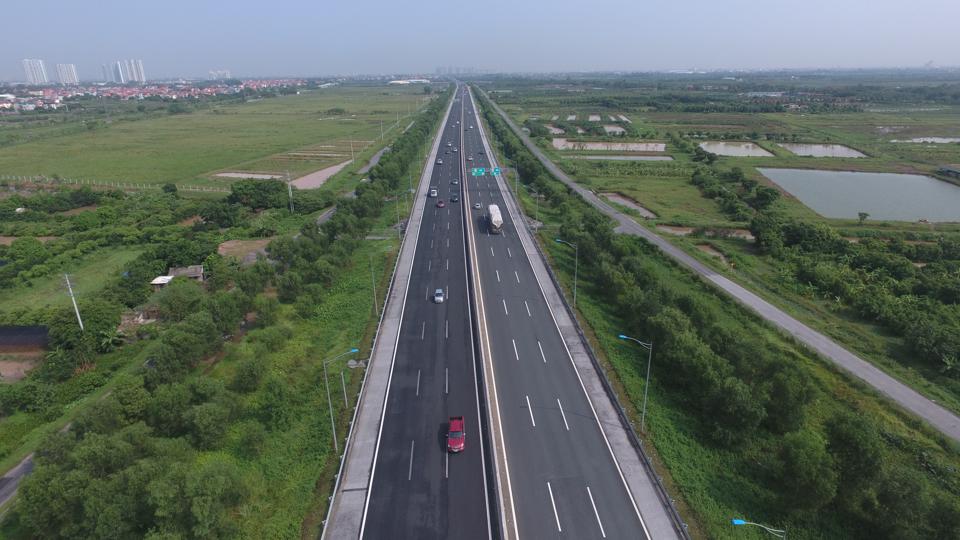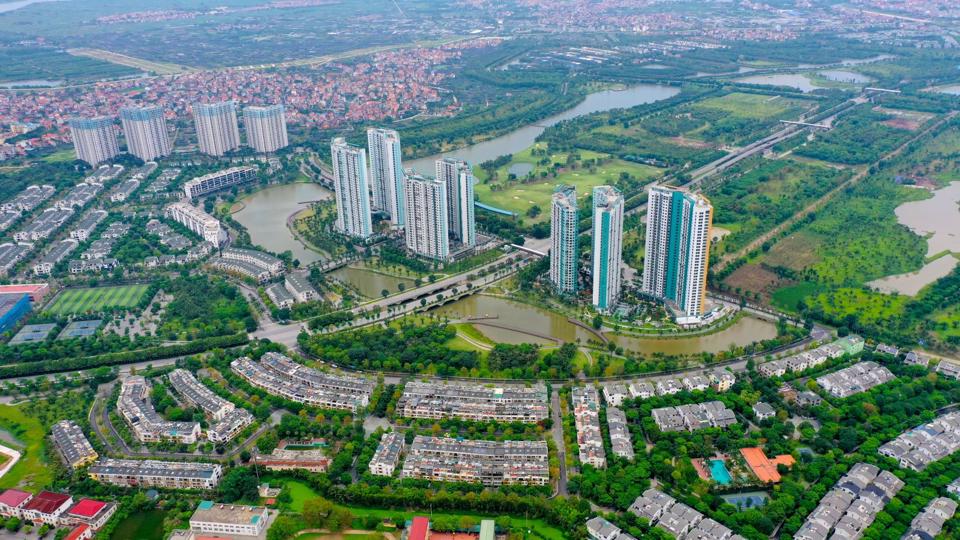Red River Delta at turning point for growth
The Red River Delta is a leading center for education, health, technology, and research, with a skilled and abundant workforce while boasting a well-designed transportation system.
Politburo’s Resolution No.30-NQ/TW on the development of the Red River Delta until 2030, with a vision to 2045, has put the region at a turning point for breakthrough growth and cemented its status as one of the country’s most important driving forces.
| Hanoi-Haiphong expressway. Photo: Cong Hung/The Hanoi Times |
Favorable conditions for growth
The Red River Delta consists of 11 provinces and cities, with Hanoi, Haiphong, and Quang Ninh being the three main growth poles. It is among the top two economic drivers in the country, having attracted a significant portion of foreign investment, with companies like Samsung, LG, Honda, Canon, Foxconn, and Toyota establishing their factories in the region.
Additionally, the Red River Delta is a leading center for education, health, technology, and research, with a skilled and abundant workforce while boasting a well-designed transportation system.
Under the Resolution, the Government has formulated an action plan to ensure that the development goal of the Red River Delta region aligns with its strengths and potential.
The targets include achieving an average growth rate of 9% in the GRDP from 2021-2030 and a GRDP per capita of approximately VND274 million (US$11,500), increasing the digital economy's contribution to 35% of the GRDP, and attaining an urbanization rate of over 55%.
By 2045, the Red River Delta will become a modern, sustainable, and well-developed region. It aspires to be a major global financial and economic center and a leading hub for education, culture, technology, and innovation.
To realize these ambitious goals, the Government has issued Resolution 14/NQ-CP, which outlines 10 key task groups, 36 specific tasks, and 20 infrastructure projects to aid the region's development.
This Resolution provides a framework for ministries, branches, and localities to develop programs and action plans that align with the region's objectives. The aim is to implement these plans vigorously and efficiently to achieve the set goals.
To this end, Prime Minister Pham Minh Chinh has tasked relevant ministries, branches, and localities in the region with developing and mapping out programs and action plans to ensure effective implementation.
Minister of Planning and Investment Nguyen Chi Dung has requested that each agency completes and issues its action plans by February 2023.
| Hanoi from above. Photo: Viet Dung |
Utilizing inter-provincial linkage for growth
Many regions actively pursue infrastructure development and promote regional connectivity to achieve synchronized urban growth.
According to Chairman of Hanoi People's Committee Tran Sy Thanh, the capital city is a key growth pole in the Northern Dynamic Region, including Haiphong and Quang Ninh.
Thanh said Hanoi is working towards completing Ring Road No.4 by 2027 and plans to build Ring Road No.5 before 2030. He also suggested that the coordination of regional linkages and the restructuring of the regional economy should be aimed at the application of green economic technology and the digital economy.
Tran Xuan Ky, the Secretary of the Quang Ninh Party Committee, emphasized the importance of developing projects that strengthen connections between rural and urban, lowland and highland areas, industry and service sectors, and tourism.
"The focus is on achieving synchronization, modernity, connectivity, and promoting economic and labor structure transformation to reduce regional disparities," he said.
Minister of Transport Nguyen Van Thang stressed his commitment to work closely with other ministries, branches, and localities to focus all resources on developing the region's transportation infrastructure. Meanwhile, the Minister of Industry and Trade, Nguyen Hong Dien, emphasized the importance of forming clusters of industries and specialized industrial parks associated with growth poles, exploiting and bringing into play the best potentials and strengths of the region, and developing the marine economy, logistics, and wind power.
The Chairman of the Board of Directors and Executive Chairman of CMC Group proposed building the Red River Delta into a regional data service center (Digital Hub) to contribute to digital transformation and building the digital economy. In this plan, Hanoi would become the country's knowledge and artificial intelligence center.
Institutional breakthroughs
At a conference on socio-economic development in the Red River Delta region, several large investors announced their intentions to expand their businesses there, with nearly 30 projects worth almost $10 billion.
These projects are mainly focused on developing transport infrastructure, urban areas, and irrigation systems, as well as addressing climate change.
Prime Minister Pham Minh Chinh, at the event, emphasized the need to promote infrastructure development, streamline administrative procedures, and review institutions to attract investment.
The Government leader called for continued cooperation between investors, businesses, and partners and urged them to uphold the spirit of cooperation for mutual benefits and maintain a long-term and sustainable business strategy.
Chinh urged investors to strictly comply with their investment commitments and cooperation agreements while adhering to Vietnamese laws.
Major projects that received investment licenses during the conference included the parking project at AEON MALL Hoang Mai, Giap Bat, with a total investment of VND6 trillion ($252 million); The Starlake residential project (VND1,730 billion or $72.6 million); Kizdzania children's amusement park (VND401 billion or $16.8 million); Trang Due 3 industrial park's infrastructure project (VND10 trillion or $420 million); Goertek Vina's new project to manufacture electrical, electronic, and multimedia audio products (VND7 trillion or $294 million).












